Xylem, Chris Long Foundation and Water Well Trust partner to further awareness of rural water access challenges Brandi Bentley-Brown of Rimrock, Arizona, received a new water well system on her property this week that will provide dependable water access, something the household has been living without for six years. Made possible through a collaborative effort between Xylem Read more
ShopTalk

Xylem, Chris Long Foundation and Water Well Trust partner to further awareness of rural water access challenges
Brandi Bentley-Brown of Rimrock, Arizona, received a new water well system on her property this week that will provide dependable water access,
something the household has been living without for six years. Made possible through a collaborative effort between Xylem Inc., the Water Well Trust (WWT) and Waterboys – a charity initiative founded by two-time Super Bowl Champion, Chris Long – this installation and subsequent donation covered all aspects of the project, including necessary equipment, well drilling and installation, as well as completion of home improvement projects. Local partners Karam Brothers and Northern Arizona Pump played a crucial role in the installation, while The Vinyl Institute provided PVC piping material.
“What drives me to do this work is knowing that I can help people solve their water problems. In Brandi’s case, her family had been without reliable water for six years, which is unimaginable,” said Nathan White, Owner and Operator, Northern Arizona Pump. “When Goulds Water Technology reached out and brought us in, we were more than happy to help. We’ve been drilling in this area for over 50 years, so it’s great to be able to give back to the community in this way. For us, being able to restore access to clean, dependable water is more rewarding than anything else.”
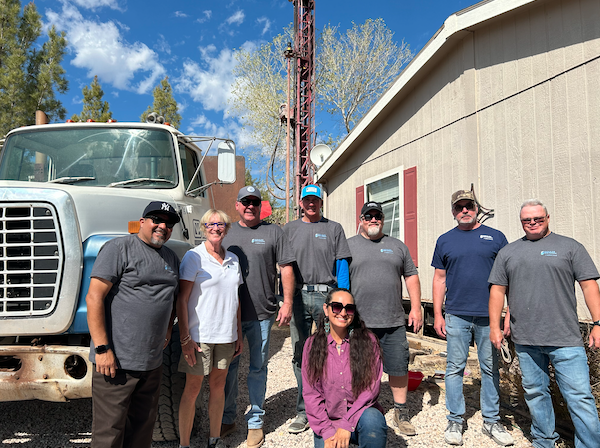
Bentley-Brown has lived on her Rimrock property since 2017 with her husband, Tai, and her son, Drake. Since the shared well serving their home and five other households went dry in 2018, Bentley-Brown and her family have had to haul water daily, adding to their challenges without a reliable water source. Despite managing mast cell activation syndrome, Bentley Brown has been working extra shifts to help make ends meet. Along with addressing her own health, she cares for her mother, who is battling terminal cancer, and assists in raising her three nephews, whom she plans to welcome into her home in the future. Additionally, her son is undergoing medical treatment, which adds to the strain of the family’s expenses.
“This well is truly life-changing for us,” said Brandi Bentley-Brown. “We’ve spent so much time and effort just trying to get by without reliable water—hauling jugs, borrowing trailers and depending on friends to shower or do laundry. It’s been exhausting, but it also made me realize how fortunate we are to have that support. This well means so much more than water—it’s stability, relief and a huge weight lifted off our shoulders.”
“Partnering with Xylem and the Water Well Trust to bring clean water to families like Brandi’s is what HometownH2O is all about,” said 2018 Walter Payton Man of the Year Award winner Chris Long. “This project marks our 20th milestone together, and we’re proud to continue making a difference for families who’ve gone too long without reliable water access.”
This donation marks the 20th collaborative project for Xylem, WWT and HometownH2O – a domestic water initiative dedicated to bringing clean, sustainable water to people and communities in need across the United States. Launched in early 2020, HometownH2O is a united effort between Long, his Foundation’s Waterboys initiative and Xylem to address water scarcity issues, which currently leave more than 2.2 million Americans without access to clean water. HometownH2O works alongside WWT, a national nonprofit that helps fund and supply water to low-income families.
“We’re honored to support Brandi and her family with a reliable source of clean water through our HometownH2O initiative,” said Susan O’Grady, senior director of marketing, building services and agriculture, Xylem. “Access to water is essential, yet too many families in rural areas still face significant challenges. With our partners, we’re not only helping to solve immediate water access issues, but also raising awareness about the ongoing water crisis in communities across the country.”
Xylem, in conjunction with its Goulds Water Technology brand, is engaged in regular water well initiatives to provide secure water access to rural areas, striving to increase public awareness of the challenges surrounding lack of water access. For more information about the HometownH2O project, visit waterboys.org/hometown.

When your clients are concerned about their homes or businesses being near sources of pollution such as factories or wildfires or need to improve indoor air quality to address allergies or other health concerns, you can better meet their requirements by installing state-of-the-art filter systems. This article explores recent advancements in HVAC filtration systems designed Read more
When your clients are concerned about their homes or businesses being near sources of pollution such as factories or wildfires or need to improve indoor air quality to address allergies or other health concerns, you can better meet their requirements by installing state-of-the-art filter systems.
This article explores recent advancements in HVAC filtration systems designed to improve indoor air quality. It covers innovative technologies, such as HEPA filters and air purifiers, that effectively remove pollutants, allergens, and contaminants, providing healthier and more comfortable indoor environments.
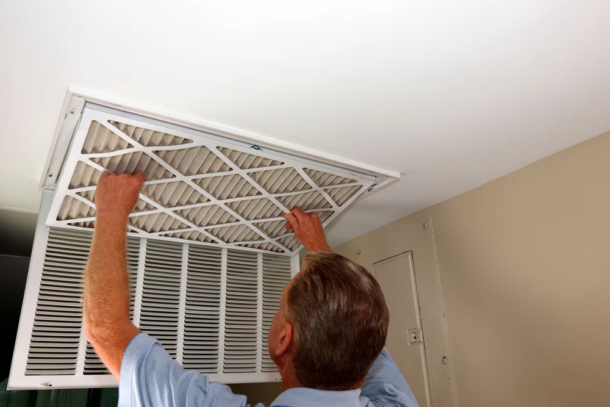
HEPA Filters
Small contaminants in the air, including particulate matter from pollution, bacteria, pollen, and dust can wreak havoc on people’s health as well as make their homes and businesses less comfortable. Children, the elderly, and sensitive individuals — such as those with asthma or other respiratory ailments — will feel the effects of these contaminants even more strongly.
When you visit a client for an AC repair job and they mention that they want to boost indoor air quality, you’ll want to suggest using high-efficiency air filters, which are rated on the Minimum Efficiency Reporting Value (MERV) scale from 1-20.
Higher MERV ratings correspond to a filter’s capability to capture more particles. For example, medium efficiency filters range from 5-8 on the MERV scale, while higher efficiency MERV filters rated 13-16 can cut down particles up to 95%.
For advanced protection, install filters with a High Efficiency Particulate Air (HEPA) rating, which corresponds to MERV 17-20, according to the U.S. government’s air quality resource.
Remind your clients to clean or replace their air filters per the manufacturer’s guidance if they are not hiring you to take care of this task when you perform routine preventative maintenance.
IoT Devices
To further enhance indoor air quality, install Internet of Things devices (which can include sensors and actuators), to help boost indoor air quality. With IoT technology integrated with the client’s air filter, you have a smart filter that delivers air quality data in real time.
Homeowners and business owners can monitor the status of their indoor air quality and adjust the HVAC controls accordingly, even from remote using computers or mobile devices.
Air Purification Devices
You can purify indoor air using advanced devices such as ionizers and ultraviolet lights.
- Ionizers
Installing a bipolar ionization system on the air handling unit of a building’s HVAC system sends ions into the air to force particles to clump together to form bigger particles, making it easier for filters to capture them.
Ionizers can also render pathogens harmless, which people use to combat ailments such as influenza and the common cold (and COVID, according to laboratory research). Deploy ionizers with caution, as some systems may increase ozone concentration in a building to the point that people experience respiratory reactions.
- UV-C Light Systems
Another tool for combatting pathogens in the air is a germicidal UV unit. Because of the high energy loads needed to run them, these units are geared more toward commercial facilities rather than residences.
UV-C wavelengths destroy pathogens’ external protein layer, nullifying them. However, you must handle, install, and use UV-C systems with care because they can damage people’s corneas, harm DNA, and cause cancer.
These dangers tend to occur in UV-C systems used primarily to sterilize surfaces. However, employing a UV-C system that cleans an air stream in conjunction with HVAC equipment can be an effective solution as long as you keep the safety considerations top of mind to safeguard occupants.
Taking Advantage of HVAC Filtration Technology to Benefit Your Clients
Professional tradespeople working to provide their clients with healthier and more comfortable indoor environments will want to take advantage of innovative technologies — such as air purifiers, HEPA filters, and integrated IoT devices — to eliminate allergens, contaminants, and pollutants.
Author bio: Michael Carlson is the President of Gene May Heating & Cooling. He has been in the heating and cooling industry for more than 32 years and is the sole owner of the business.
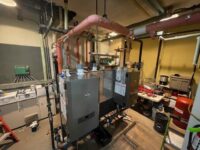
Hydronics Webinars Hosted by NTI Open Up Classroom for Contractors By Thomas Renner Continuing education is essential in any industry. Very few manufacturers, however, go the extra mile to assist workers who need training and product support. David Zerbe discovered a team that provides a different path toward customer education. Four years ago, Zerbe – Read more
Hydronics Webinars Hosted by NTI Open Up Classroom for Contractors
By Thomas Renner
Continuing education is essential in any industry. Very few manufacturers, however, go the extra mile to assist workers who need training and product support.
David Zerbe discovered a team that provides a different path toward customer education. Four years ago, Zerbe – a contractor with Steam Specialist HVAC in Pennsylvania – started attending webinars offered by NTI. The bi-monthly, hour-long webinars cover all things hydronics and are the longest-running webinars of any boiler manufacturer.
The “Thirsty Thursday” learning sessions are part of the customer service and training offerings from NTI, which is part of the Ariston Group. In addition to the webinars, Zerbe has found the manufacturer’s customer service and technical proficiency helpful in advancing his product knowledge and offering his customers superior craftsmanship.
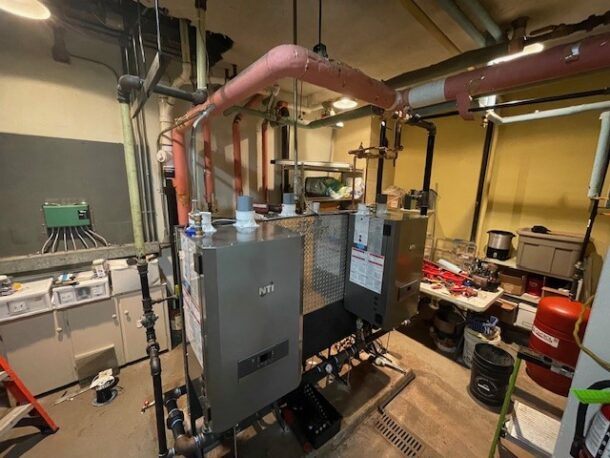
Zerbe said his company’s previous owner helped him discover NTI products. “We were looking for a new condensing boiler to install and was pointed towards NTI through our supplier, APR,’’ Zerbe said. “I received an email about Thirsty Thursdays and I started sitting in on them, and immediately loved the environment and the learning.”
Learning Extension
The free webinars are an extension of NTI’s support for contractors who want to learn more about their craft and grow their business. Contractors who attend the seminar learn how to set up boilers more efficiently and safely while also learning about new equipment and industry trends.
The webinars – which have been uploaded to YouTube this year – cover a wide range of issues, everything from detailed product information to navigating legal complexities. “We’re invested in what we’re doing,’’ said Steve Wieland, Mid-Atlantic Regional Sales Manager of NTI. “The contractors love it. They’ve learned a lot by the seat of their pants and from working with guys 40 years ago. A lot of old dogs are calling me and saying I didn’t think anyone could teach me new tricks. It’s a fun time.”
Condensing boilers are highly efficient – most newer models reach over 90 percent efficiency – and can help save homeowners hundreds of dollars each year. Condensing boilers can reduce a household’s carbon footprint and do not require specific ventilation through a chimney, as is required with non-condensing boilers.
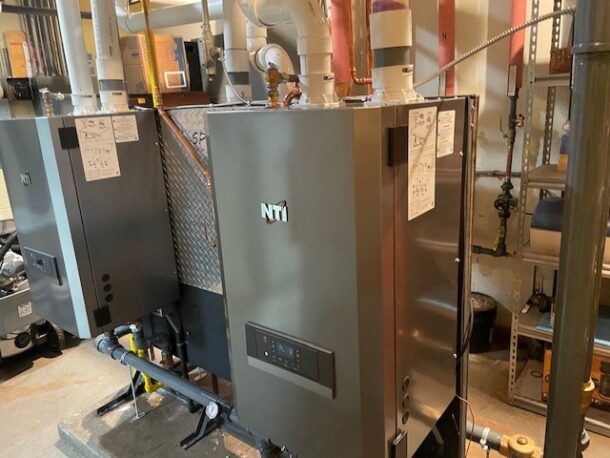
The boilers also have more complex internal systems. The webinars help contractors get a better understanding of the sophisticated internal components, and cover everything related to installation and service of the units.
“Contractors will find out about piping, hydronics, set up and everything from standard hydronic systems to snow melt systems,’’ Wieland said. “We have been doing some part-specific things. One episode we spent 45 minutes on negative-pressure gas valves. We’ll cover every aspect of piping and venting, everything that’s going on in the boiler room.”
Support System
The webinars are a unique component to NTI’s education and support platforms, which include dedicated technical support, hands-on training sessions and videos, and live chats on the company website. From the manufacturing of the unit to the education network, NTI has a unique focus on supporting technicians. Zerbe found out quickly how NTI’s support network benefits contractors.
“On my first install, I had questions and called tech support,’’ Zerbe said. “Normally when you call a tech support number you are on hold for hours. Within minutes I was on the phone with someone and had all of my questions answered. And over the years, I’ve had to call with issues where I needed support. They will walk through testing and parts and track down the problem with you.”
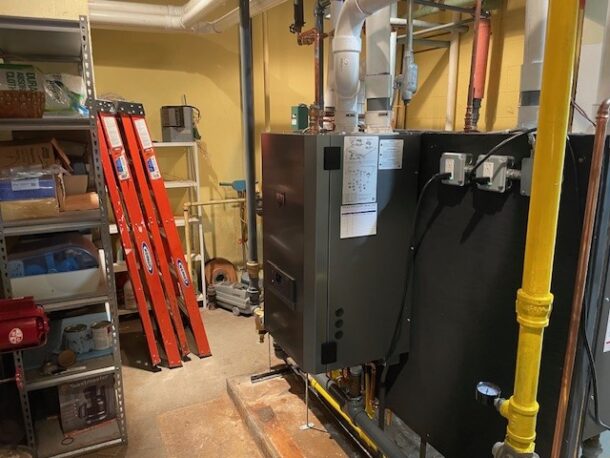
Zerbe works primarily with NTI’s TRX line, which includes embedded Wi-Fi connectivity and a user interface that has been redesigned for efficiency and ease of use. A swing-down control box enhances serviceability and makes all major components easily accessible.
“Working with NTI, I have learned that they are made to make my life as a technician easier,’’ Zerbe said. “When a part fails, you don’t get a code that tells you it could be this problem, or it could be that problem. The codes are very well-defined. And when we install them, no house is the same. You can set the parameters to the application and it’s all set.”
Driving Conversation
The webinars are a unique method of bringing contractors together to enhance learning, share information and for many, discuss industry trends. Knowledge is power, and the lively discussions help contractors learn from one another about all the issues impacting the heating industry.
“It gives people across the nation a chance to talk to one another,’’ Wieland said. “It’s opening up the discussion to the entire nation. The webinars are having a far greater impact than I ever thought they would.”
While many customers talk about their commitment to customer service, very few offer education and support programs that benefit clients. Contractors can even go to the NTI website to sign up for live training.
“NTI stands behind its boilers, and there are many different applications where you can use them,’’ Zerbe said. “That’s what sold me on them. And I will continue to watch the videos and recommend them to any customer that wants to have a condensing boiler in their home.”
Thomas Renner writes on building, construction and other trade industry topics for publications throughout the United States.
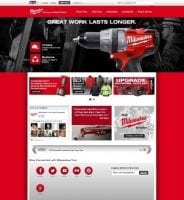
In the digital age, click fraud has emerged as a significant challenge for businesses that rely on online advertising to drive traffic and generate leads. This issue is particularly problematic for mechanical companies and related websites, which often invest heavily in digital marketing campaigns to reach their target audiences. Click fraud occurs when automated bots Read more
In the digital age, click fraud has emerged as a significant challenge for businesses that rely on online advertising to drive traffic and generate leads. This issue is particularly problematic for mechanical companies and related websites, which often invest heavily in digital marketing campaigns to reach their target audiences. Click fraud occurs when automated bots or malicious actors repeatedly click on online ads with no intention of engaging with the content, leading to wasted ad spend, skewed analytics, and diminished ROI. To address this, mechanical companies are adopting various strategies and technologies to detect, prevent, and combat click fraud. This article explores these tactics and explains why they are crucial for maintaining the integrity and effectiveness of online advertising efforts.
Understanding the Impact of Click Fraud on Trade Service Companies
Click fraud can have far-reaching consequences for mechanical companies that depend on digital marketing to attract new customers and promote their products or services. Beyond the immediate financial losses from wasted ad spend, click fraud can distort data analytics, making it difficult for companies to measure the true effectiveness of their campaigns.

The Costs of Click Fraud
- Wasted Ad Spend: One of the most direct impacts of click fraud is the unnecessary expenditure on fraudulent clicks. For mechanical companies with tight marketing budgets, this can result in significant financial losses that could have been better spent on genuine advertising efforts.
- Skewed Analytics: Click fraud inflates metrics like click-through rates (CTR) and conversion rates, making it challenging to gauge the real performance of an ad campaign. This distorted data can lead to misguided marketing strategies and poor decision-making.
- Reduced ROI: When fraudulent clicks consume a significant portion of the ad budget, the return on investment (ROI) for digital marketing efforts is significantly reduced. This not only affects current campaigns but can also undermine future marketing initiatives and overall business growth.
- Damage to Brand Reputation: Continuous exposure to click fraud can harm a company’s reputation by creating a perception of poor ad management or oversight. Potential customers might question the legitimacy of the company’s advertising practices, impacting brand trust.
According to the Association of National Advertisers (ANA), click fraud costs businesses over $5.8 billion annually, highlighting the substantial financial impact this issue has across industries, including the mechanical sector.
Strategies for Combating Click Fraud
Mechanical companies are adopting a multi-faceted approach to combat click fraud, combining advanced technologies, vigilant monitoring, and collaboration with advertising networks to detect and prevent fraudulent activities. Click fraud protection and prevention has become pretty important to most businesses who advertise online.
Key Strategies for Click Fraud Prevention
- Advanced Fraud Detection Tools: Utilizing sophisticated fraud detection software is one of the most effective ways to combat click fraud. These tools use machine learning algorithms and artificial intelligence to analyze click patterns, identify anomalies, and flag suspicious activities in real-time.
- IP Blocking and Geo-Targeting: By blocking IP addresses associated with fraudulent clicks and employing geo-targeting strategies, companies can minimize exposure to known sources of click fraud. This approach ensures that ads are only shown to legitimate users in relevant geographic locations.
- Close Monitoring of Campaign Metrics: Continuous monitoring of key campaign metrics, such as CTR and conversion rates, helps identify unusual patterns indicative of click fraud. By keeping a close eye on these metrics, companies can quickly spot and address potential issues before they escalate.
- Collaboration with Ad Networks: Many ad networks, such as Google Ads and Bing Ads, offer built-in click fraud detection and prevention measures. Collaborating with these networks and utilizing their tools and services can provide an additional layer of protection against fraudulent activities.
Table: Common Click Fraud Prevention Techniques
| Technique | Description | Benefits |
| Fraud Detection Tools | Software solutions that use AI to detect and block fraudulent clicks | Real-time detection, minimizes wasted ad spend, improves data accuracy |
| IP Blocking and Geo-Targeting | Restricting ads to specific geographic areas and blocking suspicious IPs | Reduces exposure to known fraud sources, enhances ad targeting |
| Campaign Metric Monitoring | Continuous tracking of CTR, conversion rates, and other key metrics | Early identification of fraud, allows for quick response |
| Ad Network Collaboration | Partnering with ad platforms that offer fraud detection services | Access to advanced tools, additional protection against fraud |
A study by ClickCease found that businesses using click fraud detection tools experienced a 22% reduction in fraudulent clicks, emphasizing the effectiveness of these technologies in safeguarding digital marketing investments.
Leveraging Artificial Intelligence and Machine Learning
Artificial intelligence (AI) and machine learning (ML) are at the forefront of click fraud prevention for mechanical companies. These advanced technologies offer several advantages in identifying and mitigating fraudulent activities.
How AI and ML Help Combat Click Fraud
- Pattern Recognition: AI and ML algorithms are highly effective at recognizing patterns associated with click fraud. They can analyze vast amounts of data and identify suspicious click behavior, such as repeated clicks from the same IP address or rapid clicks that exceed normal human interaction rates.
- Predictive Analysis: Machine learning models can predict potential click fraud by analyzing historical data and identifying trends that typically precede fraudulent activities. This proactive approach allows companies to take preventative measures before fraud occurs.
- Continuous Learning: One of the key benefits of AI and ML is their ability to learn and adapt over time. As they process more data, these technologies become better at detecting new and evolving forms of click fraud, ensuring continuous protection for digital advertising campaigns.
- Automated Responses: AI-powered tools can automatically block IP addresses, adjust bids, and change targeting parameters in response to detected fraud. This automation reduces the manual effort required to manage click fraud and allows companies to focus on other strategic initiatives.
According to a report by MarketsandMarkets, the global market for fraud detection and prevention solutions is expected to grow from $20.9 billion in 2021 to $40.6 billion by 2026, driven by increasing adoption of AI and ML technologies.
The Importance of Transparency and Education
In addition to technological solutions, transparency and education are crucial in combating click fraud. By fostering a culture of awareness and accountability, mechanical companies can better protect themselves from fraudulent activities.
- Educating Stakeholders: Ensuring that all stakeholders, from marketing teams to senior management, understand the risks associated with click fraud and the strategies to prevent it is essential. Regular training sessions and workshops can help build awareness and vigilance.
- Transparent Reporting: Providing transparent reports on ad performance and potential fraudulent activities can help build trust with clients and stakeholders. This transparency ensures that everyone is aware of the measures being taken to combat click fraud and the effectiveness of these efforts.
- Building Relationships with Ad Networks: Developing strong relationships with ad networks and partners allows for better collaboration in combating click fraud. Open communication with these networks ensures that companies are informed about potential threats and best practices for prevention.
- Continuous Improvement: Combating click fraud is an ongoing process that requires continuous improvement and adaptation. Regularly reviewing and updating fraud prevention strategies ensures that companies stay ahead of evolving threats.
Conclusion
As click fraud continues to pose a significant threat to online advertising, mechanical companies and websites must adopt comprehensive strategies to protect their digital marketing investments. By leveraging advanced technologies, such as AI and machine learning, and adopting proactive monitoring and prevention techniques, these businesses can minimize the impact of click fraud and optimize their advertising efforts. Additionally, fostering a culture of transparency and education can further enhance fraud prevention measures, ensuring that all stakeholders are aware of the risks and equipped to combat them. As the digital landscape evolves, staying vigilant and adaptable will be key to safeguarding against click fraud and maintaining a successful online presence.
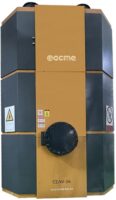
An international boiler expert helps industry professionals take advantage of high voltage electrode boilers’ virtually 100% efficient, zero-emission capabilities, providing guidance on selection and installation For consulting engineers tasked with planning, designing, and supervising construction projects for a wide range of industries, advanced electric boilers – particularly high voltage electrode boilers – offer numerous advantages Read more
An international boiler expert helps industry professionals take advantage of high voltage electrode boilers’ virtually 100% efficient, zero-emission capabilities, providing guidance on selection and installation
For consulting engineers tasked with planning, designing, and supervising construction projects for a wide range of industries, advanced electric boilers – particularly high voltage electrode boilers – offer numerous advantages over traditional fossil fuel burning boilers. Due to advances in technology, these boilers can match the capacity (up to 65 MW) and output (270,000 pounds of steam per hour) of traditional gas or oil-fired boilers in a much smaller footprint while converting almost all the energy to heat.
These zero-emission, high voltage electrode boilers are used in diverse environments for applications such as centralized heating, power plants, nuclear stations, swing-load balancing, solar/wind energy consumption, and fuel boiler replacement.
Today, there is growing interest in utilizing a new generation of these boilers as an environmentally friendly decarbonization solution. Companies across the globe are considering using electric boilers to become carbon neutral in alignment with COP26 UN Climate Change Conference targets. The transition to electric boilers also aligns with U.S. goals to achieve a carbon pollution-free power sector by 2035 and net zero emissions economy by 2050.
Electric boilers are emerging as more environmentally friendly solutions than traditional gas-fired units that emit not only the notorious greenhouse gasses carbon dioxide (CO2) and methane (CH4), but also dangerous nitrogen oxides (NOx), carbon monoxide (CO), and nitrous oxide (N2O), as well as volatile organic compounds (VOCs), sulfur dioxide (SO2), and particulate matter (PM).
“Communities and businesses appreciate the eco-friendly nature of ultra-efficient, electric boilers. Without combustion, these boilers are safe, clean, and emission free. The design eliminates many environmental issues associated with fuel burning boilers, such as fuel fumes, fly ash, and large obtrusive exhaust stacks,” says Robert Presser, Vice President of Acme Engineering, a manufacturer of industrial and commercial boilers.
However, the challenge for consulting engineers is that many have experience with gas-fired boilers but are less familiar with the selection and implementation of advanced electric boilers, especially the high voltage, high-capacity alternatives available today.
To bridge the knowledge gap, boiler technology expert Robert Presser explains what consulting engineers most need to understand about electric boiler technology, including its selection, implementation, and benefits. Acme, which has operations in the U.S., Canada, and Europe, provides state-of-the-art boilers and accessories for some of the world’s most renowned companies including Siemens, Toshiba, Bechel, PG&E, Power & Mine, and Hydro Quebec.
Types of Electric Boilers
The first factor to consider in selecting an electric boiler is how much capacity will be required by the user, business, or community.
According to Presser, lower voltage (480 KV) electric resistance heating element boilers are economical, compact, reliable sources to produce steam or hot water for industrial use. The units are well suited to supply these resources at lower capacities, from 9 to 3,600 kW.
However, there are design limitations when heating element boilers exceed 4 MW in capacity, as numerous flanges, elements, contactors, and fuses are typically necessary to function properly. The considerable amperage involved also requires expensive bars for distribution, step-down transformers, and large switch gear.
To avoid these complications at capacities of 4 MW or higher, high voltage jet type and immersed electrode boilers were developed.
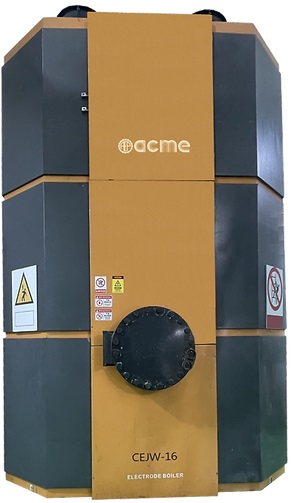
High Voltage Electrode Boilers
In the high voltage category, electrode boilers consist of two basic types: immersion and water jet.
In resistance element type boilers, current flows through a resistance wire, which generates heat. The heat is transferred through the element’s sheaf and into the water by conduction to produce hot water or steam.
“With the immersed electrode design, electric current is passed through the water from the electrodes to the counter electrodes [grounded via the vessel’s shell]. The more direct the exposure between counter electrode shield and the electrode, the greater the current draw [amperage] and the more power is produced in hot water or steam,” explains Presser.
Modern jet type electrode boilers utilize the conductive and resistive properties of water to carry electric current and generate steam. An AC current from the grounded central column to a minimum of one electrode box per phase, using the water as a conductor. Since the water has electrical resistance, the current flow generates heat directly in the water itself.
“The more current [amps] that flows, the more heat [BTUs] is generated, and the more steam is produced,” says Presser.
High voltage jet or immersed electrode boilers directly connect to high voltage supply lines from 4.16 KV – 25 KV. Hot water boilers are filled with treated water to create a closed loop system.
According to Presser, the maximum capacity of the boiler can be adjusted by varying the conductivity, which is determined by the temperature and boiler capacity. Typically, a conductivity monitor is installed in the piping and any adjustments are automatically made with chemical treatment.
When it comes to installation, consulting engineers need to consider whether there is sufficient high voltage power, and if a new transformer will be required.
“For these high voltage electrode boilers, the incoming voltage typically required by code is a 4-Wire, three-phase wye wiring configuration, and the phases must be balanced,” says Presser.
In addition, it is necessary to ensure that there is sufficient available space to bring in and install the electrode boilers. This includes determining that there is adequate access into buildings and elevators as well as enough clearance through hallways and doors. When space is limited, Acme’s Slim Series resistance boilers units are designed to produce ample hot water while easing conversion and installation with an ability to “squeeze through” narrow passageways and fit into smaller spaces without costly demolition.
The Benefits of Electric Boilers
For consulting engineers considering the use of electric boilers, there are numerous advantages over gas fired units. These include very high energy efficiency and output control, along with increased safety and other benefits.
Energy Efficiency
Although traditional gas fired boilers are familiar, the design is inherently less efficient than modern electric units. Within this category, the energy efficiency of electrode boiler technology offers extraordinarily efficient power-to-heat generation capability.
“With an electrode boiler, you get out of it what you put into it. Basically, you don’t have a decline in efficiency,” says Presser.
With electrode boilers, almost all the electrical energy is converted into heat with no stack or heat transfer losses. This level of efficiency is not achievable in fuel-fired steam boilers even when using an economizer.
In the case of Acme’s CEJS, which has a boiler capacity from 6MW to 68MW, the electrode boiler operates at distribution voltages from 4.16 to 25 KV. The unit is up to 99.9% efficient at converting energy into heat. The boiler can produce steam in capacities up to 270,000 pounds per hour, with pressure ratings from 75 PSIG to 500 PSIG.
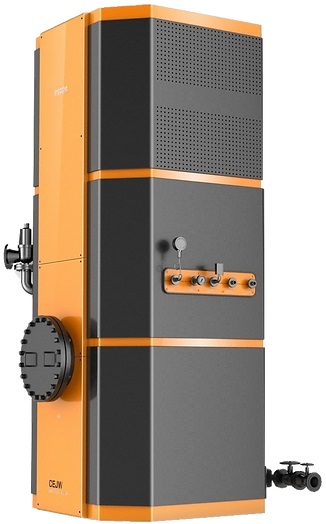
Output Control
High voltage electric boilers also offer superior control of energy output. The control system automatically monitors factors such as water level, steam pressure, conductivity, and electrical imbalances so energy input and adjustment is precise, and virtually immediate.
“In contrast, increasing or decreasing the temperature in a gas fired boiler is a slower process because it takes time for the heat in the boiler to rise or dissipate before reaching the targeted output,” says Presser.
As an example, advanced high voltage electrode steam boilers like Acme’s CEJS can control the capacity progressively from 0%-100% and have a 100% turndown ratio (the ratio between a boiler’s maximum and minimum output). Most gas boilers have a ratio of 10:1 or 5:1, which means the units require a much higher minimum output level to function and take a significant time to reach full capacity.
“With a 100% turndown ratio [in a high voltage jet-type electrode unit], you can leave the boiler in standby at low pressure and bring it to full capacity in about 90 seconds as needed, which no other boiler type can achieve today,” says Presser.
High voltage immersion steam boilers like Acme’s CEJWS can control the capacity progressively from 10%-100%.
“From hot stand-by, both the CEJS and the CEJWS steam boilers reach 100% capacity in one minute,” says Presser. He adds that stand-by insulation losses never exceed 10KW even for large boilers.
Increased Safety
High voltage electric boilers are inherently much safer to use than traditional, combustion-fueled boilers, which can emit harmful vapors, leak gas, and even cause explosions and fires.
“With gas burning boilers, any gas leak can increase the risk of an explosion wherever there are fuel lines, fumes, flames, or storage tanks. So, gas units must be continually monitored or periodically inspected,” says Presser.
In gas-fired boilers, explosions can result in the ignition and instantaneous combustion of highly flammable gas, vapor, or dust that has accumulated in a boiler. The force of the explosion is often much greater than the boiler combustion chamber can withstand. Minor explosions, known as flarebacks or blowbacks, can also suddenly blow flames many feet from firing doors and observation ports, seriously burning anyone in the path of a flame.
Natural gas-fired boiler emissions also pose potential hazards in the form of emissions. In addition, fossil fuel burning boilers can face potentially dangerous operational issues stemming from excessive heat accumulation.
Modern electric boilers eliminate many of these risks, so can dramatically improve both operator and environmental safety.
“With the jet type electrode boilers, there are no combustion hazards because there are no flames, fumes, fuel lines or storage tanks, which minimizes the risk of explosions and fires,” says Presser. In case of an electrical short, the breaker that protects the high voltage circuit trips in a matter of milliseconds, protecting the boiler and the electrical network. There is no chance of electrical mishap or fire from the boiler.
“Electric boilers, and specifically the electrode units, are inherently the safest boiler design today. These units do not need an operator because if anything goes wrong, the breaker trips, preventing further escalation of the issue,” says Presser.
Since the design does not rely on combustion, it does not create emissions that would endanger the operator or environment. In addition, the design eliminates common environmental problems associated with fossil fuel burning boilers such as fuel fumes, fly ash, and large obtrusive exhaust stacks.
Although consulting engineers are experts in their designated fields of expertise, keeping up to date with the latest developments in advanced electric boiler technology can provide significant advantages in providing hot water and steam for a variety of industrial purposes.
Understanding how to select, specify, and install electric boilers for the specific situation will conserve substantial energy, space, and resources compared to fuel-fired options. In addition, it will not only facilitate project success but also a safer environment that helps combat global warming.
For more info, contact Robert Presser at Acme Engineering via e mail: rpresser@acmeprod.com; phone: (514) 342-5656; or web: acmeprod.com/hv-electrode-boilers.
